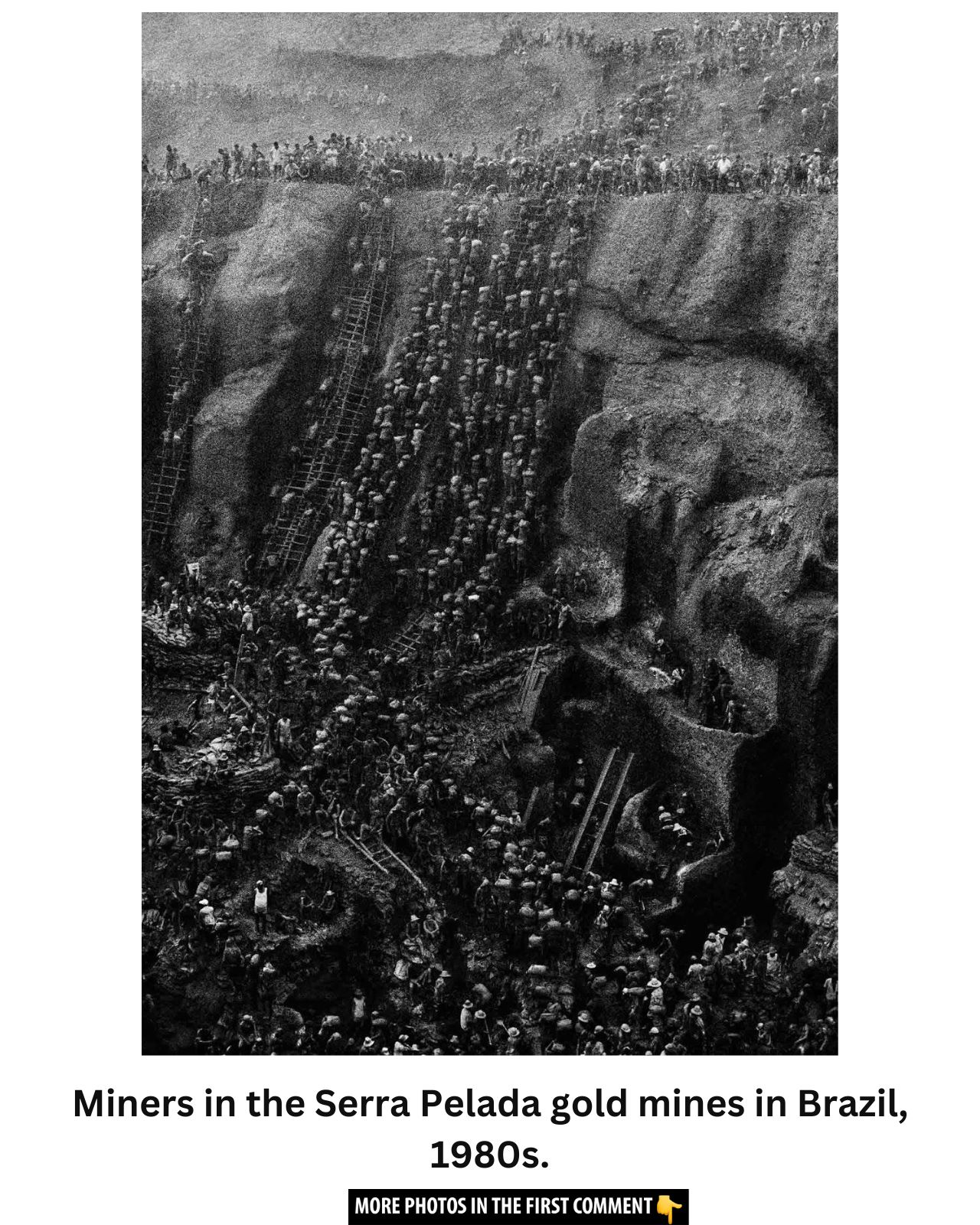In the late 1970s, an astonishing discovery on the banks of a small river in Brazil set the stage for one of the most violent and chaotic gold rushes in history. In 1979, a local child stumbled upon a six-gram nugget of gold in the Serra Pelada region, located 430 kilometers south of the Amazon River. Word spread quickly, sparking a flood of miners and fortune seekers eager to strike it rich. Within weeks, what began as a solitary find turned into a full-fledged gold rush. By the early 1980s, the Serra Pelada mine, now infamous for its horrific conditions, would become the site of tens of thousands of miners. At its peak, it wasn’t just the largest open-air gold mine in the world; it was a place where human dreams and nightmares collided.
The Journey to Serra Pelada: Isolation and Danger
The remote location of the Serra Pelada mine presented significant challenges for the miners. The only access to the site was by plane or foot. Miners often paid exorbitant amounts to taxi drivers to take them part of the way, after which they would have to trek 15 kilometers on foot through the dense Amazonian jungle.
The journey itself was perilous, as travelers faced not only the dangers of the wild terrain but also the unpredictability of the environment. Once arriving at the site, miners found themselves surrounded by a maze of chaotic conditions—drenched in mud, fighting off diseases, and struggling to survive in a place where safety and order were non-existent.
Life in the Mine: The ‘Mud Hogs’
At the core of the Serra Pelada experience were the miners, who became known as “mud hogs.” The open-pit mine was essentially a vast muddy hole where miners would dig into the earth, fill heavy sacks with dirt, and carry them up precarious wooden ladders. The ladders, some 400 meters high, were the only way to get the earth to the surface, where it could be sifted for gold.
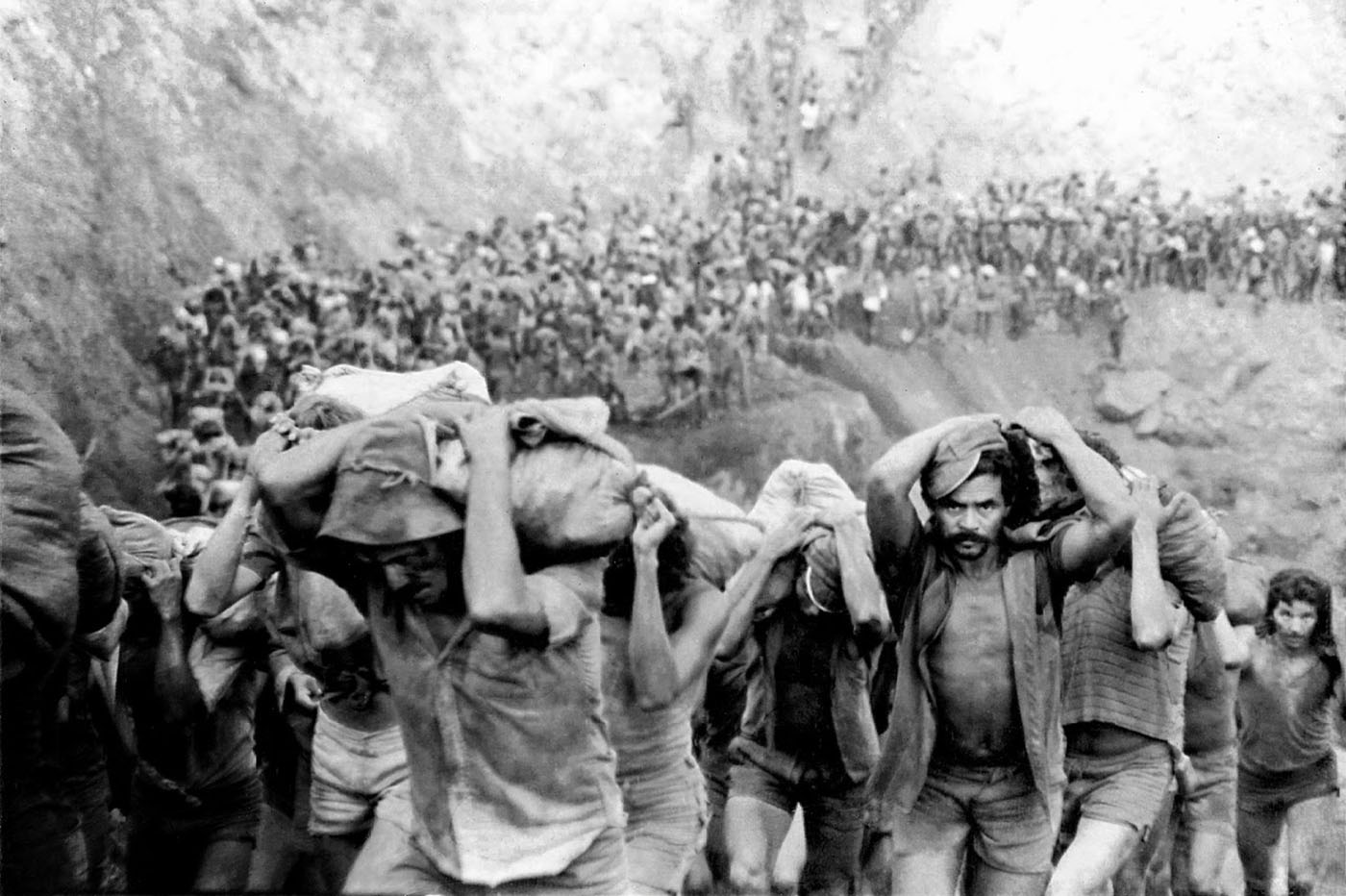
The work was grueling, and the miners faced constant physical strain. With each sack weighing between 30 to 60 kilograms, these “mud hogs” labored for as little as 20 cents per sack. Yet, despite the backbreaking work, the prospect of finding gold kept them going. Each miner was assigned a small 2×2 meter plot of land, and the hope of striking it rich kept them digging down into the earth, praying for a chance at a fortune.
Video
Watch the video of Marcelo Tas in Serra Pelada, 1984, in its entirety! Don’t miss this firsthand account of one of Brazil’s most infamous gold mines.
Photographer Sebastião Salgado’s Haunting Images
One of the most powerful records of life at Serra Pelada comes from the lens of Brazilian photographer Sebastião Salgado. His haunting images of the mine show the grueling, dehumanizing labor faced by the miners. Salgado famously described his experience at the mine, stating, “Every hair on my body stood on edge. The Pyramids, the history of mankind unfolded. I had traveled to the dawn of time.”
His photographs, showcasing men covered in mud, climbing out of the depths of the mine with sacks of dirt, provide a sobering reminder of the human cost of gold extraction. The images capture not just the physical toll of the work, but the hopelessness, exhaustion, and desperation in the eyes of the miners.
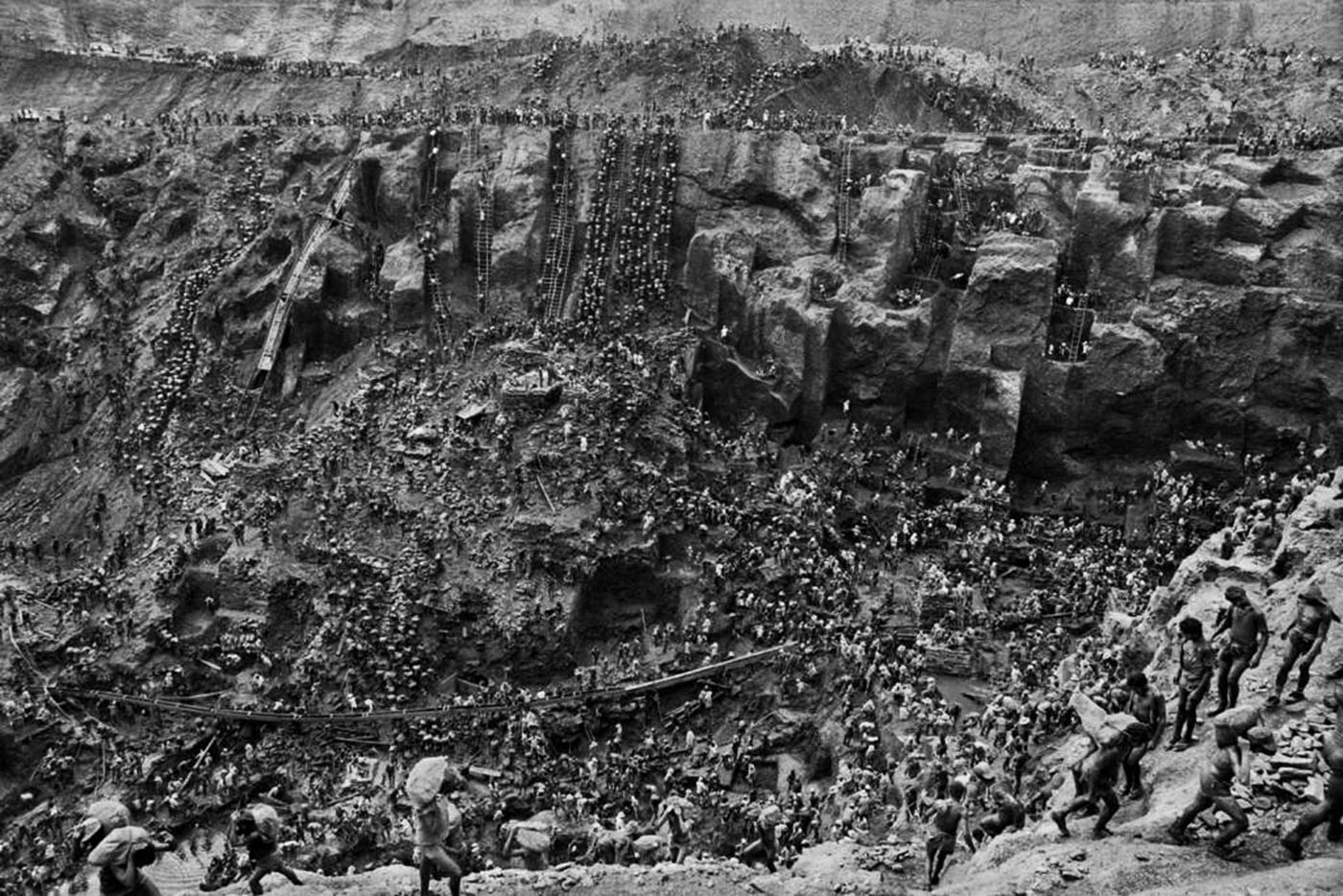
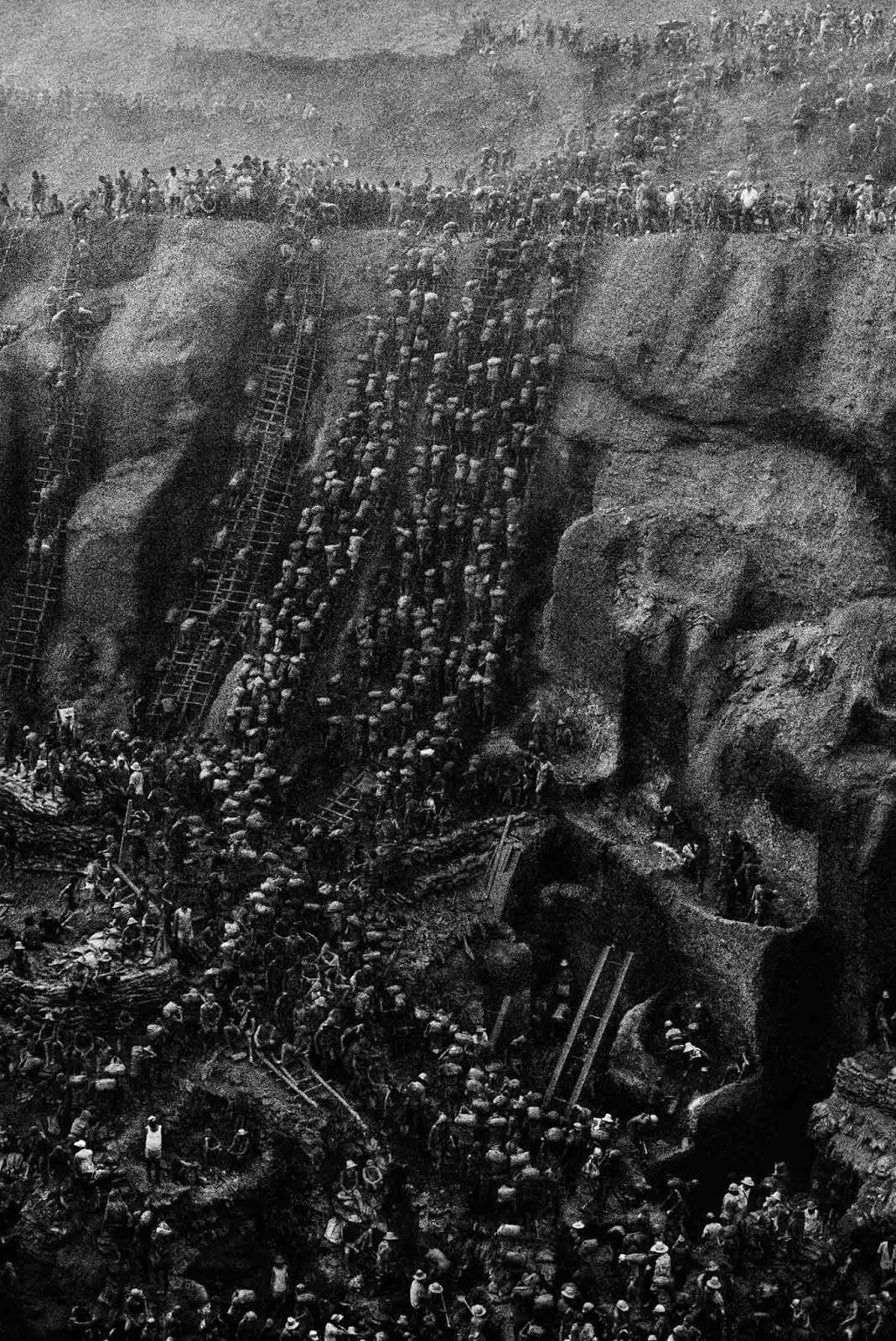
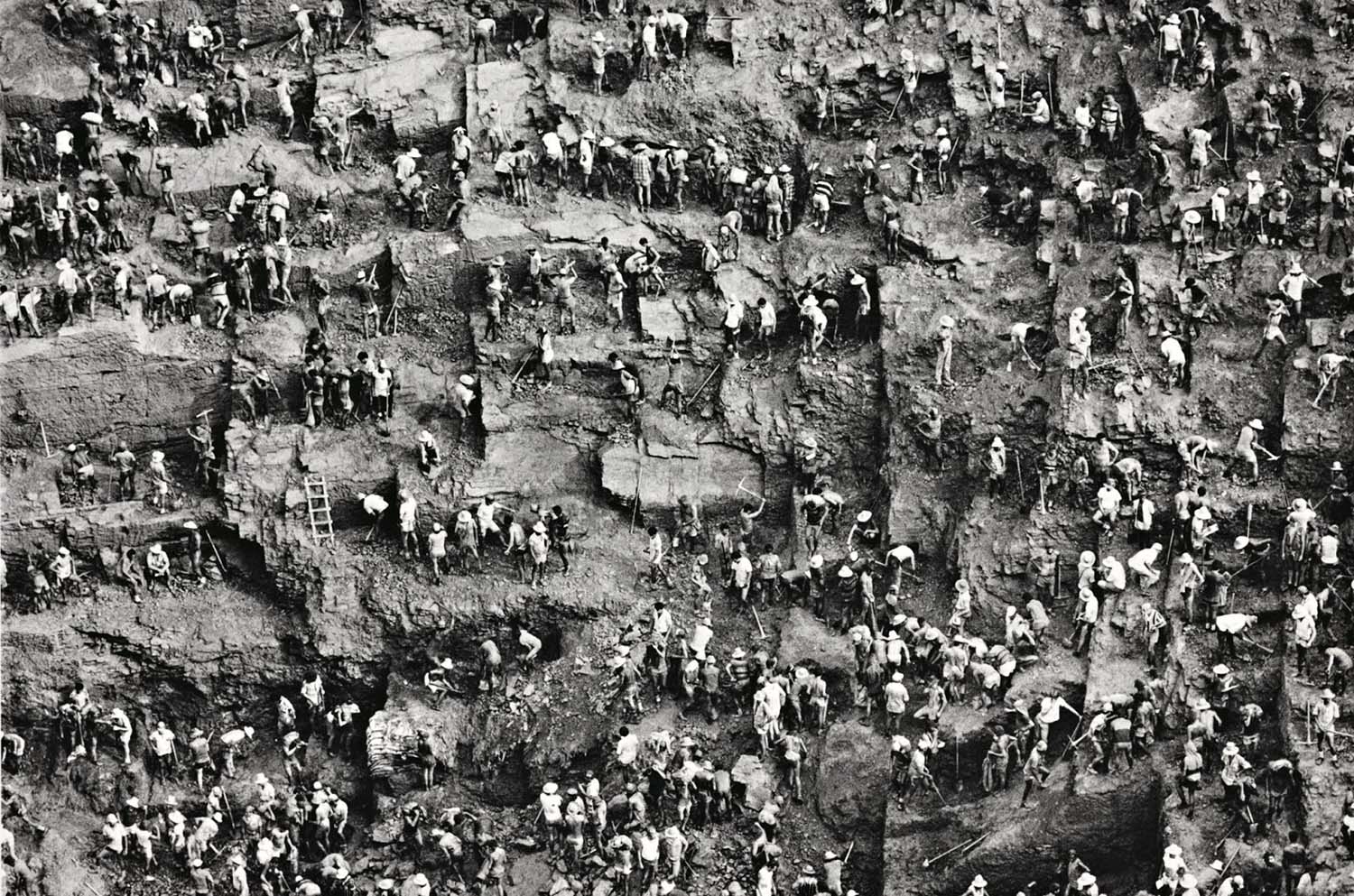
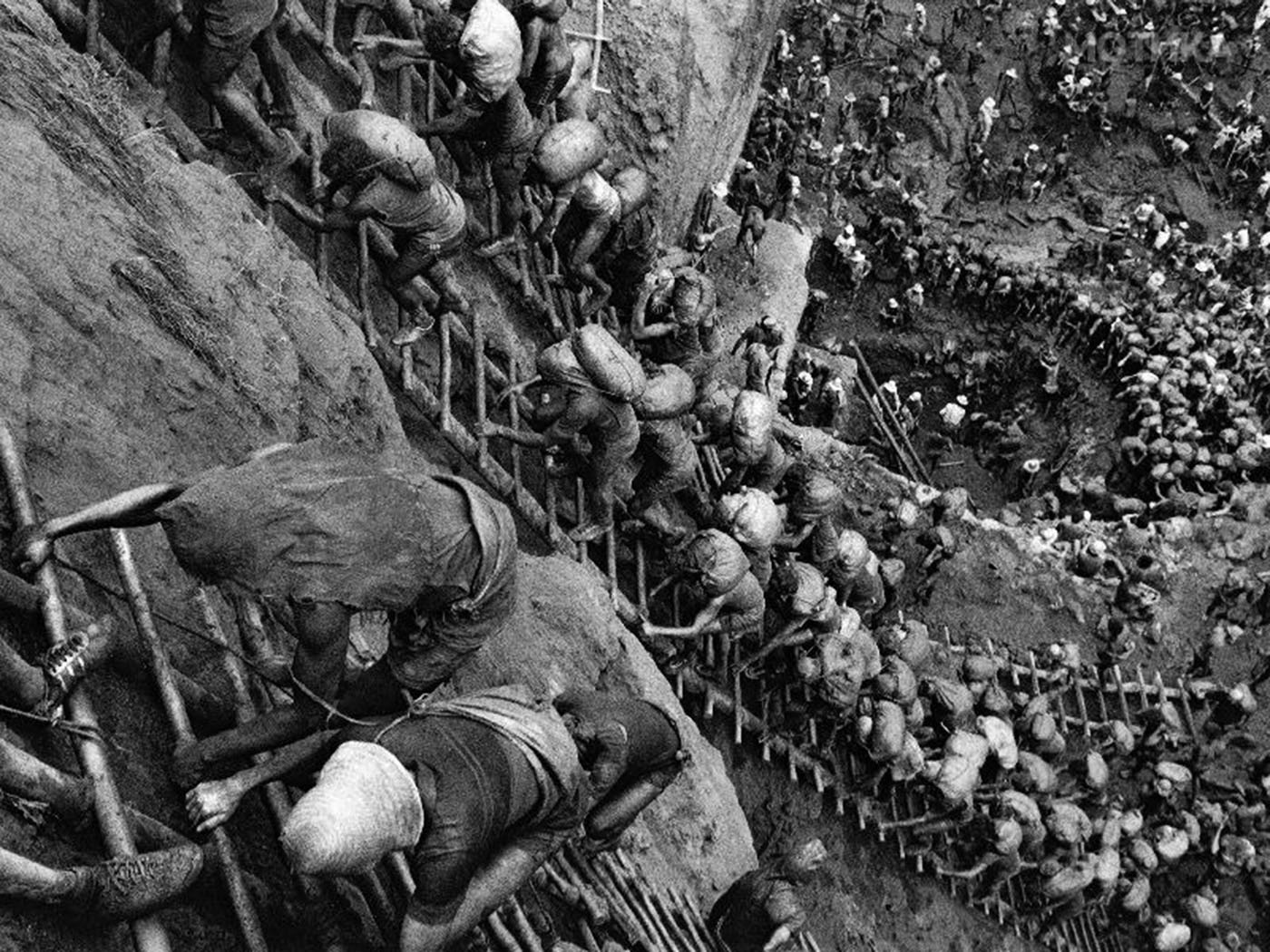
Environmental Disaster: Mercury Contamination
The extraction of gold from Serra Pelada was not only harmful to the miners but also to the environment. The mining process required the use of mercury to separate gold from the earth. This practice left large areas of the surrounding environment dangerously contaminated with toxic mercury, which seeped into nearby rivers and soil.
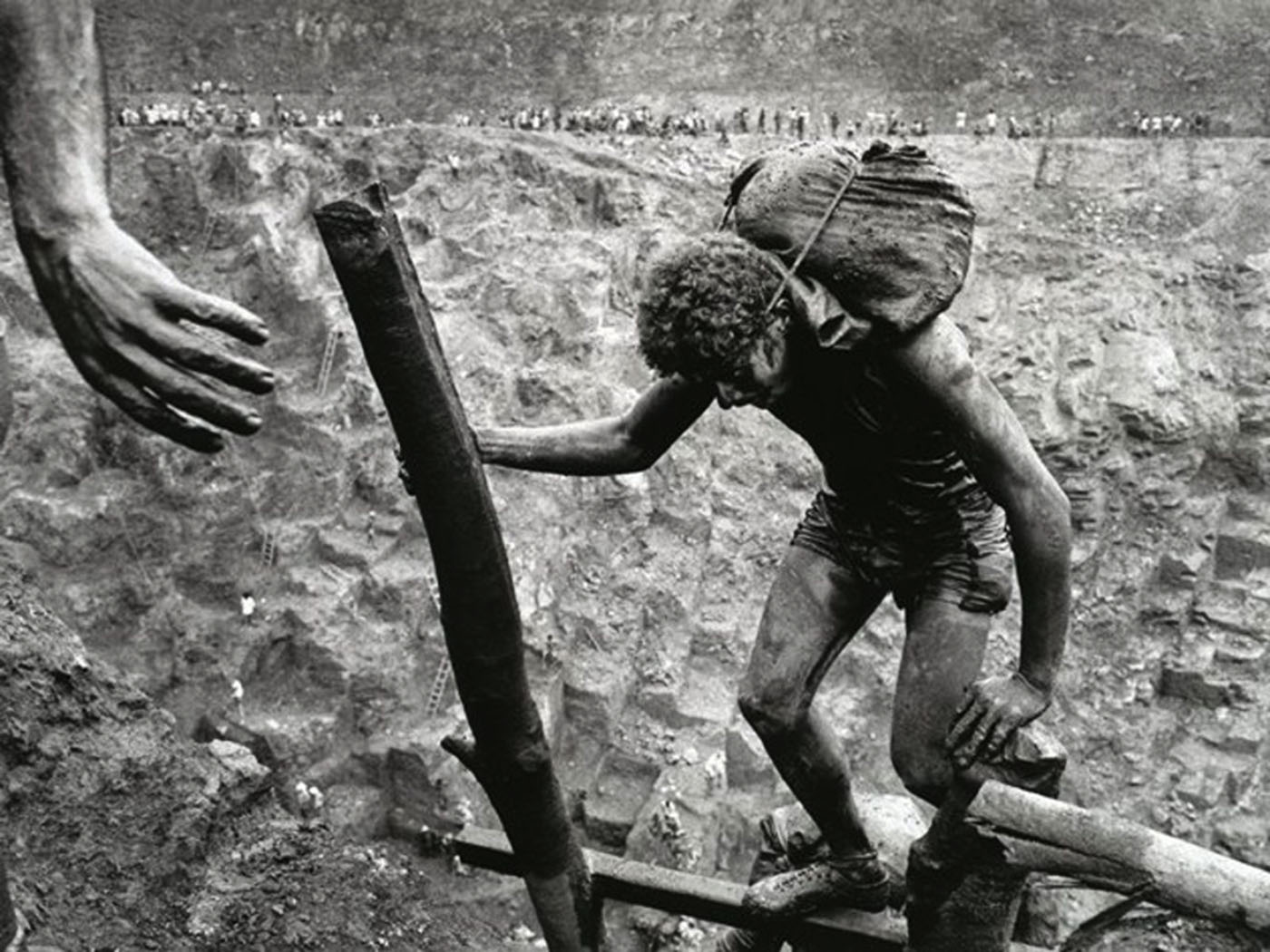
The contamination wasn’t just limited to the immediate area of the mine. Those living downstream, eating fish from the river, experienced elevated mercury levels in their bodies, posing long-term health risks. The environmental legacy of Serra Pelada remains a stark reminder of the devastating effects of unregulated gold mining on both the land and the people who depend on it.
The Military Intervention: Controlling the Chaos
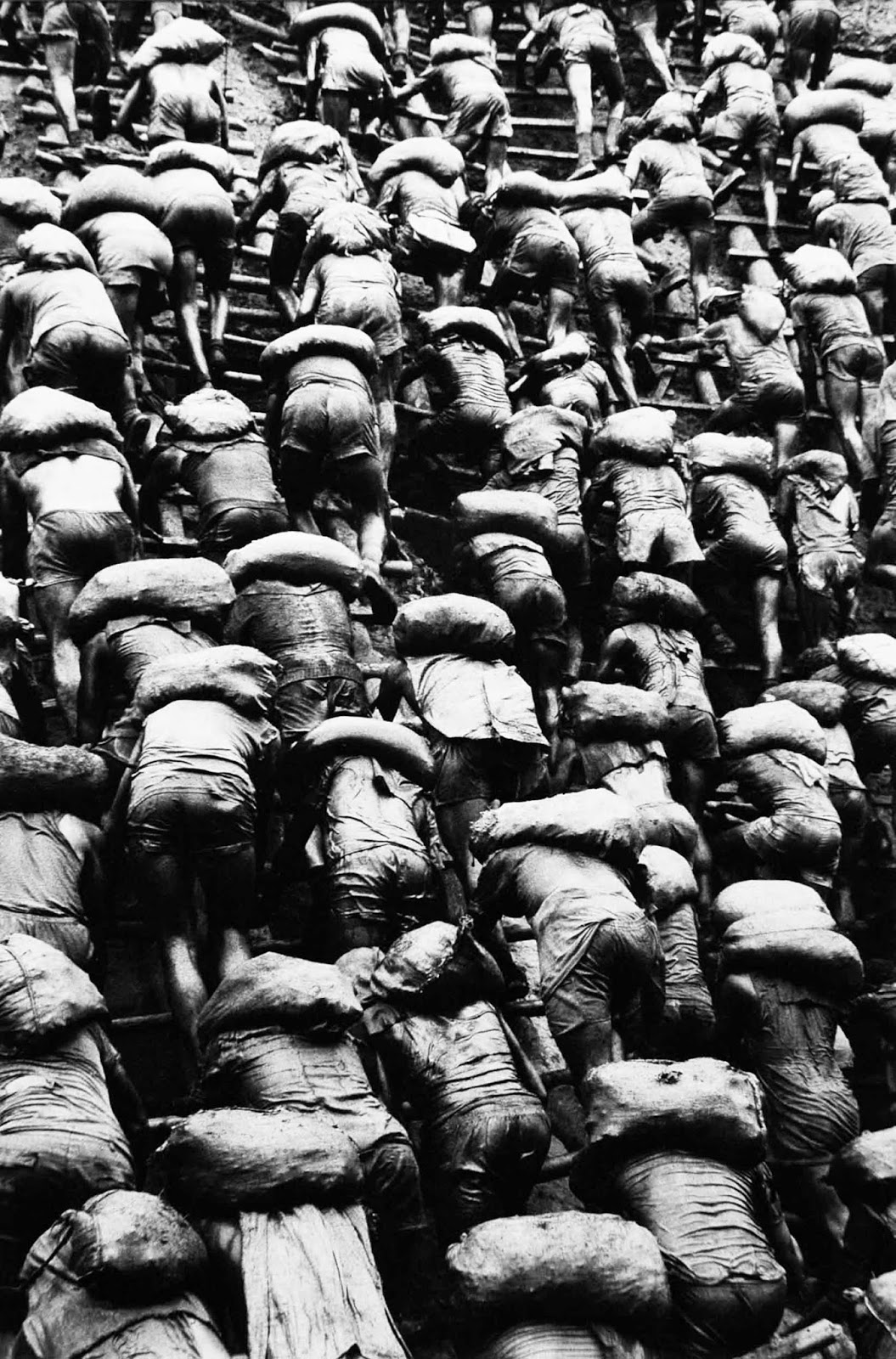
As the gold rush escalated and violence broke out, the Brazilian government intervened. In an attempt to prevent exploitation and reduce violence between the miners and the owners, the Brazilian military took control of the Serra Pelada mine just three months after the discovery of gold. Before the military’s involvement, the mine owners had been selling basic necessities like water and food at inflated prices. Water, for instance, cost an exorbitant $3 per liter—a steep price for those struggling to survive. In an effort to curb the chaos, the government agreed to purchase the gold mined by the workers for 75% of the London Metal Exchange price, though this still left many miners feeling cheated.

Smuggling and Violence: A Dark Economy

Despite government intervention, corruption and crime thrived. Although official estimates say the mine produced 45 tons of gold, it is believed that as much as 90% of the gold was smuggled out of the mine by workers and others involved in the operation. Smuggling became a significant part of the economy around Serra Pelada, with miners and others participating in illicit activities to profit from the wealth beneath the surface. At the same time, violence and lawlessness defined life in the surrounding town, where prostitution and murder were rampant. The town became notorious for its brutality, with an average of 60–80 unsolved murders occurring each month.
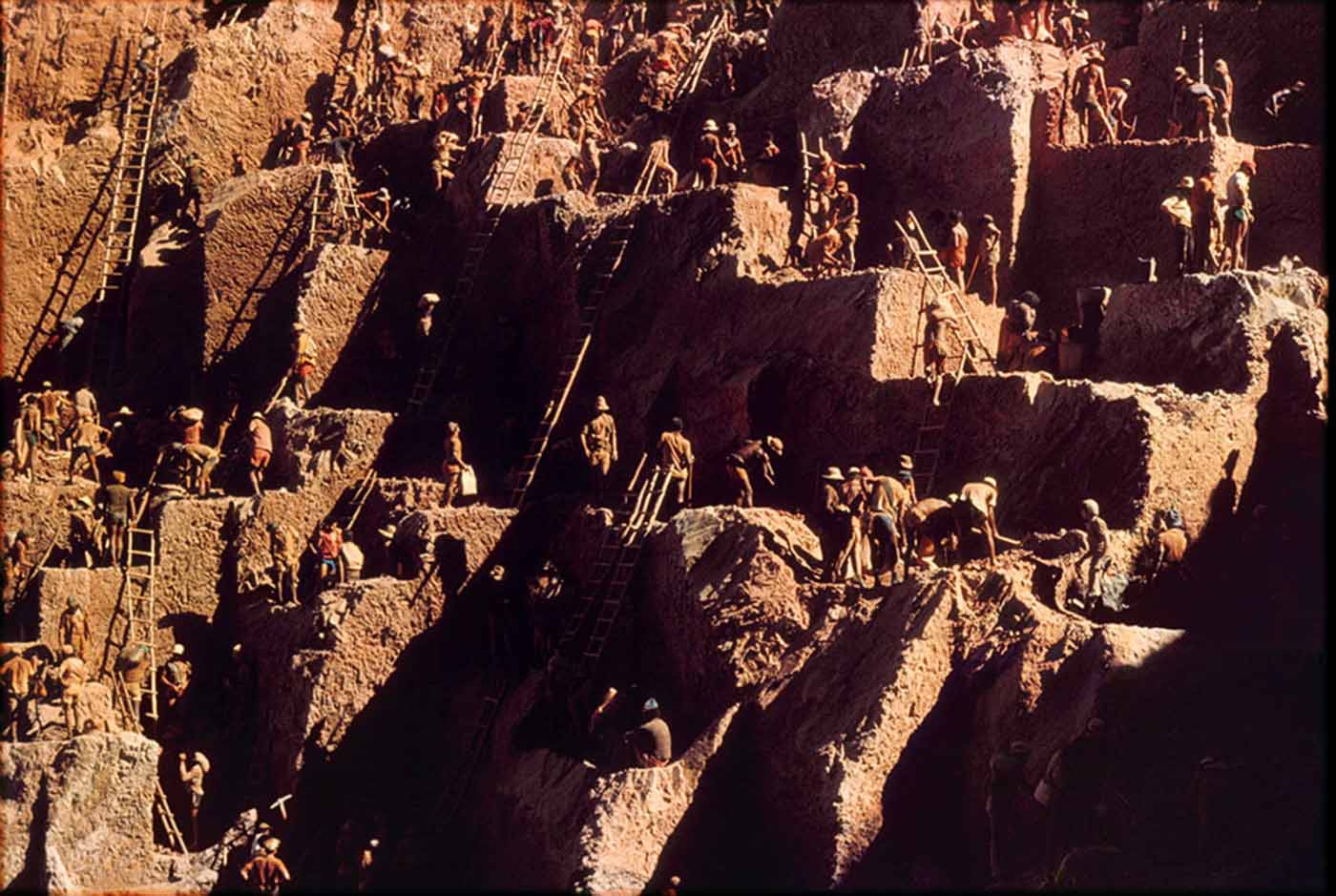
Prostitution and Dehumanization: Life Outside the Mine
Serra Pelada’s gold rush was not just a tragedy of labor but also of human exploitation. With women banned from working in the mine, many found themselves offering sexual services to miners in exchange for gold. Thousands of underage girls prostituted themselves for gold flakes, while the nearby town turned into a den of crime, vice, and violence. The atmosphere was one of complete dehumanization, where people, especially women, were treated as commodities. For many, the dream of wealth turned into a nightmare of exploitation, with little chance of escape.
The Flooded Pit: The End of Serra Pelada’s Gold Rush
By the mid-1980s, the Serra Pelada mine had become too dangerous to continue. Flooding of the pit made it impossible to work, and the government eventually abandoned the site. Though the official records show that nearly 45 tons of gold were extracted from the mine, it is estimated that the true value of gold smuggled from the mine was much higher. Geological surveys have suggested that up to 50 tons of gold may still be buried under the flooded pit—a fortune lost to the depths of history.
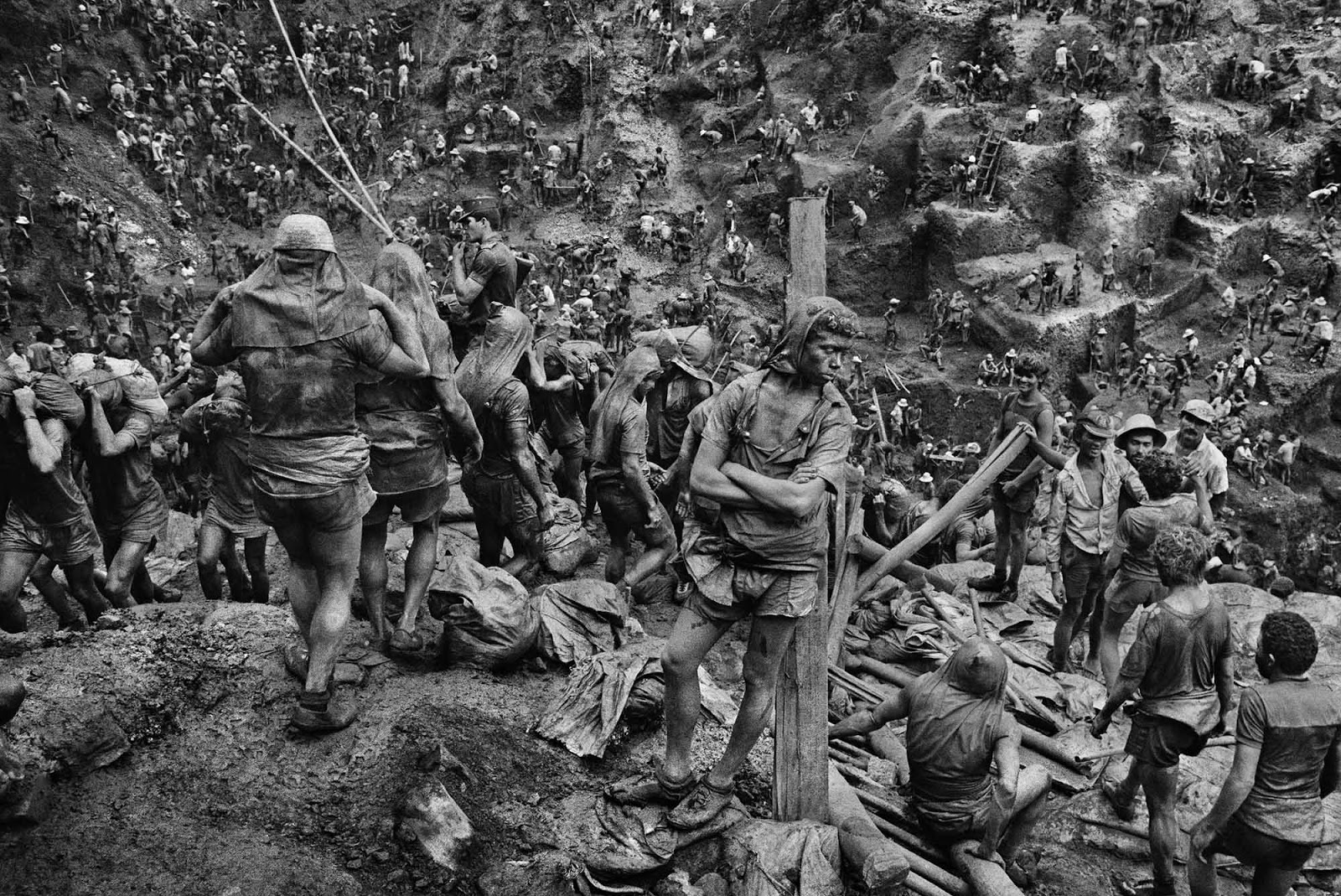
Video
Watch the video to uncover the story behind the heartbreaking pictures of Serra Pelada! Don’t miss this powerful look at the struggles faced by miners in Brazil’s notorious gold mine.
Conclusion: The Legacy of Serra Pelada
The Serra Pelada gold rush is a testament to the extremes that humans will go to in search of wealth, but it also serves as a cautionary tale of exploitation, violence, and environmental devastation. The hundreds of thousands who flocked to Serra Pelada, many in search of a better life, were met with an unforgiving world where human life held little value, and the dreams of gold came at an unbearable cost.
The images captured by Sebastião Salgado remain a poignant reminder of the suffering endured by those who dared to hope for fortune in the depths of one of the most brutal gold rushes in history. The story of Serra Pelada is not just about gold—it’s about the darker side of human nature when driven by greed, despair, and the hope for freedom.
